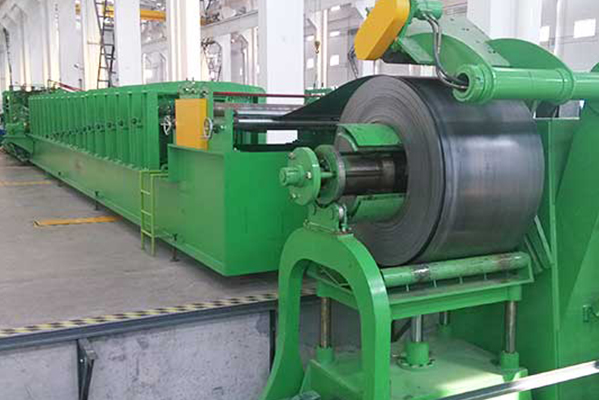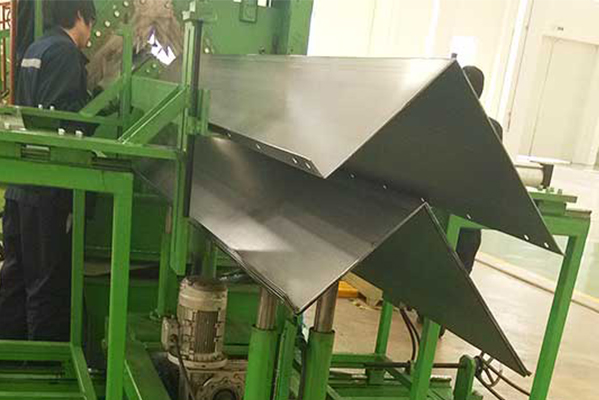Navigation Menu
Contact Us
- Email:
- info@wxavatar.com
- Address:
- Yurong Village, Yuqi Street, Huishan District, Wuxi, China.
Release Date:Mar 25, 2025 Visit:28 Source:Roll Forming Machine Factory
Steel silo roll forming machines are specialized equipment used to manufacture curved metal panels for constructing storage silos. These machines play a crucial role in industries such as agriculture, cement production, mining, and food storage. While they offer significant benefits in terms of efficiency and precision, they also have some limitations. This article examines the key advantages and disadvantages of steel silo roll forming machines.
Advantages of Steel Silo Roll Forming Machines
1. High Production Efficiency
Continuous operation: The machine can produce long, curved panels in a single pass, reducing production time.
Fast processing speeds: Modern roll forming machines can achieve speeds of 5-25 meters per minute, significantly faster than manual bending methods.
2. Precision and Consistency
Accurate curvature: The roller dies ensure uniform bending, maintaining consistent panel dimensions.
Minimal human error: Automated systems reduce variations in product quality compared to manual fabrication.
3. Material Savings
Reduced waste: Roll forming minimizes scrap since it uses a continuous coil, optimizing material usage.
No secondary processing: The panels are formed and cut to required lengths in one process, eliminating extra trimming steps.

4. Versatility
Adjustable curvature: The machine can be set to produce different diameters for various silo sizes.
Multiple material compatibility: It can work with different steel grades and thicknesses (typically 0.8mm to 6mm).
5. Cost-Effectiveness
Lower labor costs: Automation reduces the need for skilled workers in bending and shaping.
Energy-efficient: Compared to other metal-forming methods (like stamping), roll forming consumes less power.
6. Strength and Durability of Panels
Seamless construction: The rolled panels provide better structural integrity compared to welded sections.
Corrosion resistance: Pre-galvanized or coated steel coils can be used, enhancing silo longevity.
Disadvantages of Steel Silo Roll Forming Machines
1. High Initial Investment
Expensive machinery: Advanced roll forming machines require a significant upfront cost, making them less accessible for small businesses.
Tooling costs: Custom roller dies for specific silo designs can be costly.
2. Limited Flexibility for Complex Shapes
Only suitable for uniform curves: The machine excels at producing simple curved panels but struggles with complex geometries (e.g., conical or multi-radius designs).
Difficult to modify mid-production: Changing the curvature requires stopping the machine and adjusting the rollers.
3. Maintenance Requirements
Regular lubrication needed: Rollers and cutting blades must be maintained to prevent wear and tear.
Susceptible to misalignment: If not properly calibrated, the machine can produce defective panels.
4. Material Thickness Limitations
Thinner materials preferred: While roll forming works well with 0.8mm–6mm steel, thicker plates may require alternative forming methods.
Risk of deformation: Very thin materials (below 0.8mm) may warp during rolling.
5. Space and Setup Requirements
Large footprint: The machine requires significant factory space, especially for high-capacity models.
Skilled operators needed: Despite automation, setup and troubleshooting require trained personnel.

6. Not Ideal for Small Batch Production
Economical only for mass production: The cost-effectiveness diminishes for small orders due to setup time and tooling expenses.
Conclusion
Steel silo roll forming machines offer high efficiency, precision, and cost savings for large-scale silo production, making them indispensable in industries requiring bulk storage solutions. However, their high initial cost, maintenance needs, and limitations in handling complex shapes can be drawbacks for some businesses.
When deciding whether to invest in a steel silo roll forming machine, companies should consider their production volume, budget, and silo design requirements. For mass production of standard silos, these machines are an excellent choice, but for custom or small-scale projects, alternative fabrication methods may be more suitable.